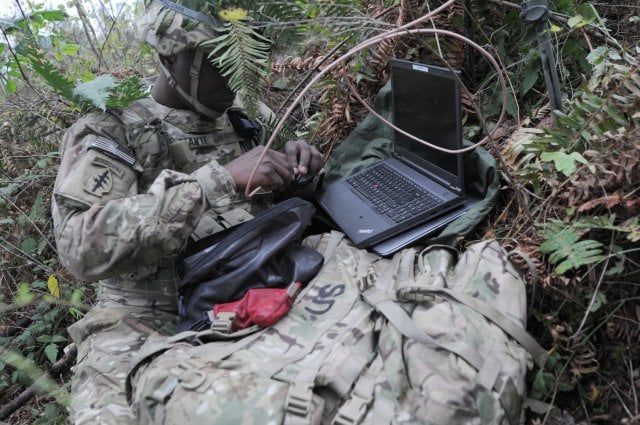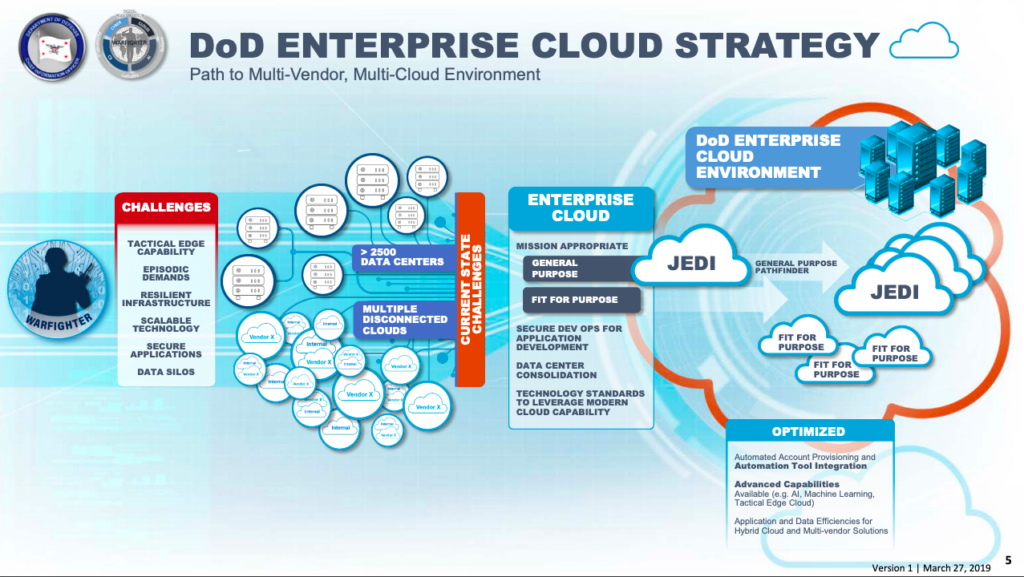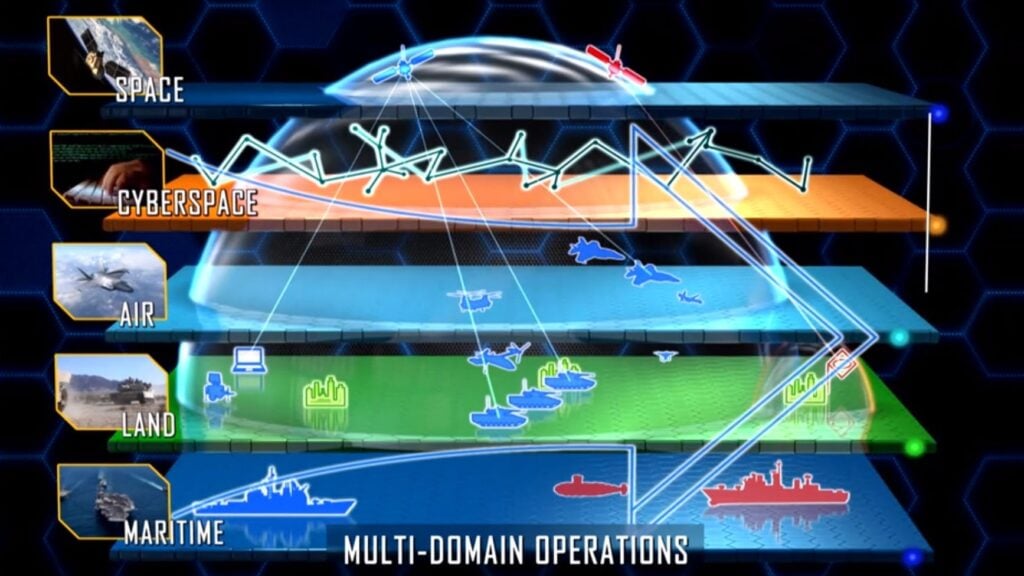By SYDNEY J. FREEDBERG JR.
WASHINGTON: “If you know your enemy and know yourself,” the legendary Chinese general Sun-Tzu wrote in the sixth century B.C., “you need not fear the outcome of one hundred battles.” In 2020, the US Army is finding that a new technology, cloud computing, is essential to both kinds of knowledge.
“A lot of the work that we’re doing right now [with cloud] is really giving us the ability to see ourselves more clearly,” Brig. Gen. Martin Klein, head of Strategic Operations for the Army’s Pentagon headquarters staff, told reporters last week. “When we’re mobilizing our reserve components, as we’ve done over the course of the last couple of months in the COVID-19 crisis, we’re actually able to see units move more clearly through the alert, mobilization, and deploy phases.”
There’s even a virtual “commander’s dashboard,” known as Vantage, to make it easy for senior officers – who are rarely tech geeks – to access the unit-status data now on the cloud, he said.
 Lockheed’s prototype Precision Strike Missile (PrSM) fires from an Army HIMARS launcher truck in its first flight test, December 2019.
Lockheed’s prototype Precision Strike Missile (PrSM) fires from an Army HIMARS launcher truck in its first flight test, December 2019.
At the same time, on the know-your-enemy side, Klein said, the service’s Project Convergence experiments are exploring ways to move targeting data from a host of sensors – many of them operated by the Air Force and nascent Space Force – through the new tactical network the Army is developing to the new long-range missile launchers and missile defense systems now in testing. The seamless, real-time flow of data across land, sea, air, space, and cyberspace is central to the emerging combat concept called Joint All-Domain Operations.
As tensions rise, ISR demand will increase exponentially as will the need for kinetic response to threats.
“Army Futures Command is also leveraging the cloud to great effect for the sensor-to-shooter work that we’re doing,” Klein said. “We’ve found over the course of the last six months in particular — since I’ve been here — how important the cloud is to doing that.”
Six months ago, in February, was when Klein’s directorate was created, merging previously separate staff sections for cyber/electronic warfare, mission command, and space.
“We had a couple of smaller directorates… within the G-3/5/7,” the operations section, said Klein’s boss, Lt. Gen. Charles Flynn, on an AUSA webcast last week. “We recognized that actually having these disparate parts in the G-3/5/7 did not create the coordination and synchronization that we needed.”
With military command-and-control networks increasingly reliant on satellites for both communications and reconnaissance, and with hacking and jamming an increasing threat to those networks, the different functions increasingly overlapped in practice. Having them separated in the bureaucracy didn’t make sense. Putting them together under a one-star general like Klein, Flynn explained, improved coordination not only within the Army – across the staff, the Chief Information Officer (aka G-6), Army Futures Command, and more – but also between the Army, its sister services, and the Office of the Secretary of Defense.
Bringing the bureaucracy together across organizational barriers is an important step towards bringing the Army’s data together across technical barriers.
Defense Secretary Mark Esper portrayed the plan as a strategic shift. President Trump said, “we’re reducing the force because [Germany is] not paying their bills.” Criticism from both sides of the aisle was swift.

A soldier from the Army’s offensive cyber brigade during an exercise at Fort Lewis, Washington.
“There’s a large effort underway, through what we call a data migration/cloud development strategy,” Flynn said. “The Army’s data is stored is primarily stored through four different locations, [including] the warfighting mission area that I own.” But those disparate systems weren’t built to easily exchange data with each other – hence the need to migrate data to the cloud.
“We’ve invested heavily in the in these large data centers, these repositories … of data that wasn’t necessarily exposed to the community of interest,” neither in the acquisition world developing new weapons, nor in the operational world employing them, Klein said. “We have found that by using cloud abstraction layers” – which handle the wonky technical details out of sight of the user – “that we’re actually able to communicate more effectively.”
“We make sure that we have common data standards, that we have common architectures to make our data available… and accessible throughout the community of interest, not only within the Army,” Klein said.
But which cloud computing system is the Army using? Whichever works, Klein said, any and all of them. “We’re actually working with multiple cloud service providers,” he said. “So we’re trying to build cloud-agnostic software, if you will, that can lift into different cloud service provider environments.”

The Pentagon’s plan to consolidate many — but not all — of its 500-plus cloud contracts into a single Joint Enterprise Defense Infrastructure (JEDI). Note the suggestion that the single “pathfinder” contract for JEDI might evolve into multiple JEDI contracts.
Those common tools will often require some tweaking to function in any particular vendor’s cloud, Klein acknowledged, but it’s a lot less effort than tying yourself to one provider and having to reinvent the wheel to use anyone else. “We know, as we go from a Microsoft Azure or an AWS, or even a Google for that matter, that there’s going to be slight variation,” he said, “[but] using these cloud agnostic tools, we are much better off than just trying to go with one system.”
Klein says the Army’s common tools should translate just fine to the Defense Department’s much-delayed Joint Enterprise Defense Infrastructure (JEDI) cloud, when and if that emerges from its ongoing legal battles. “We’re very excited, you know, to see some kind of a DoD enterprise cloud, whatever form factor that comes in,” he said. “We know those decisions are being made right now. But in the meantime, we’ll leverage the commercial cloud service providers in order to do what we need to do.”

No comments:
Post a Comment